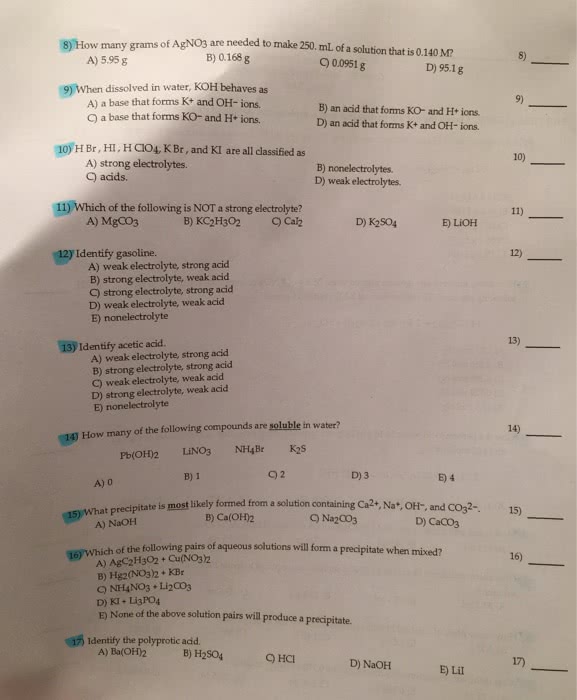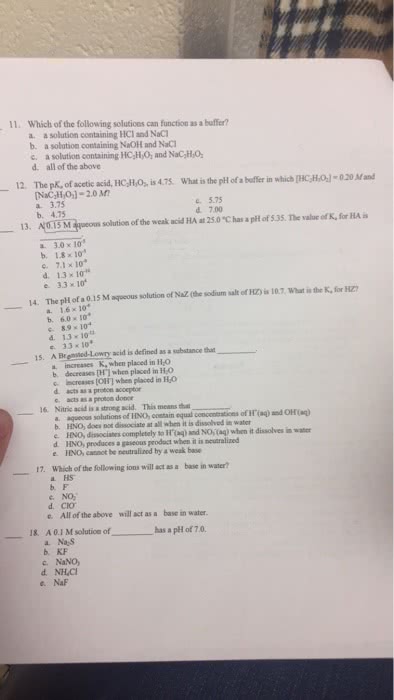CHE 131 Chapter Notes - Chapter 4.4: Titration, Equivalence Point, Barium Hydroxide

55
CHE 131 Full Course Notes
Verified Note
55 documents
Document Summary
Acid-base reactions (neutralization reaction) occurs when an acid reacts with a base. Acid- substance that produces h+ ions when dissolved in water. Base- is a substance that produces oh- ions when dissolved in water. Acidic solutions arise when certain covalent h- containing molecules dissociate into ions in water. Acid and bases are categorized in terms of their strength , the degree to which they dissociate into ions in water. Strong acids and strong bases dissociate completely into ions. Soluble ionic compounds, they are strong electrolytes and conduct a large current. Weak acids and weak bases dissociate very little into ions. Since strong acid (strong base) dissociate completely, we can find the molarity of h+ or. Oh- and the amount (mol) or number of each ion in solution. Strong acids: hcl, hbr, hi, hno3, h2so4, hclo4. Strong bases have either oh- or o-2 as part of their structure. 2h+ + 2cl- +ba2+ +2oh- ---> ba2+ 2cl- + h2o.



